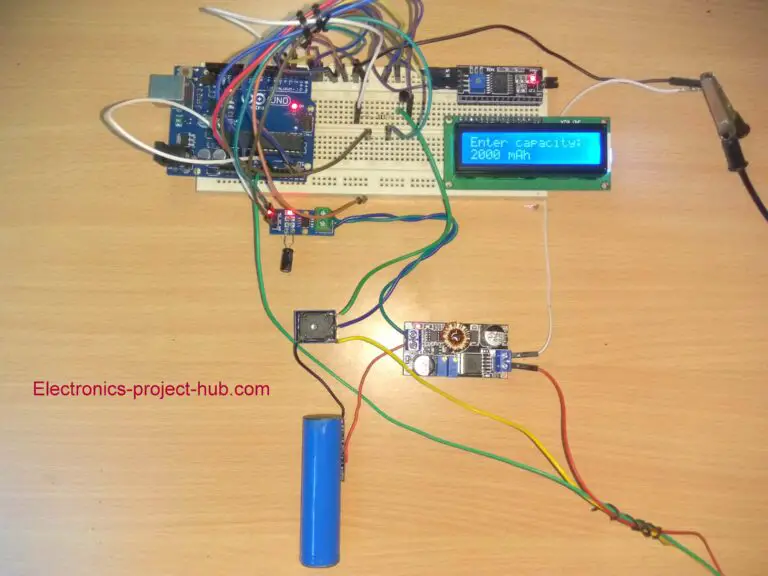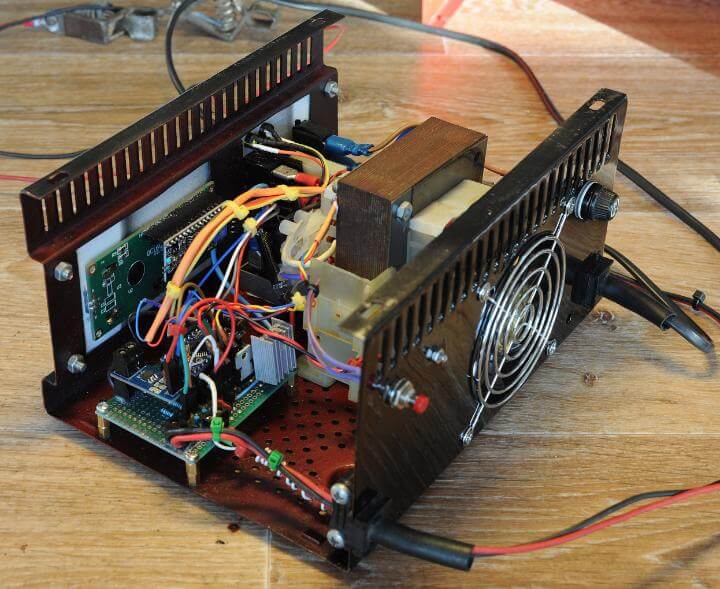
In this mode, the current remains constant, and the voltage varies and slowly increases. The battery is charged at a constant current limited by the charger until it reaches a certain threshold voltage (Battery Voltage = 3.4V). In the cc/cv technique, if the voltage of the battery is less than a certain threshold, then it is charged at constant current (cc) mode. So, the LiFePO4 battery should only be charged with a compatible charger for safety purposes and to ensure their performance and long life span. A LiFePO4 battery could be charged by the lead-acid or LiPo chargers but extreme cautions should be applied which is not recommended. LiFePO4 batteries are charged through the “constant current / constant voltage” (cc/cv) techniques. Positive 9V output from the fixed type voltage regulator LM7809 is used to power up the Arduino board, and the output of the variable voltage regulator LM317 is used for battery charging purposes. The output of the full-wave rectifier is filtered through the Low Pass Filter (LPF) and finally, the regulated supply is obtained by the use of voltage regulators.

So for the conversion of AC to DC, this device uses Center Tapped Full-Wave Rectifier. Working Principle of Arduino LiFePO4 Battery Charger CircuitĪrduino LiFePO4 battery charger device is powered by the 220V AC supply, but to operate the Arduino board and to charge a LiFePO4 battery DC supply is required. U1, U2 = LM317EMP (Variable voltage regulator IC)ġ6X2 Alphanumeric I2C LCD or 128×64 OLED I2C DisplayĬenter Tapped Step Down Transformer = 9V-0-9V, 2A Q1, Q2 = BC547 (General Purpose Switching Transistor) R2, R10 = 1.2Ω at 5W (Wire wound resistor)Ĭ3 = 1000μF at 25V (Electrolytic Capacitor)Ĭ4 = 100μF at 25V (Electrolytic Capacitor)Ĭ5 = 10μF at 25V (Electrolytic Capacitor)ĭ1, D2, D3, D5, D6, D7, D12 = 1N4007 (General Purpose Rectifier Diode)ĭ4, D8, D10, D11 = 1N5408 (General Purpose Rectifier Diode)


For example, a 1000mAh (or 1Ah) battery rated at 1C should provide a 1A current for 1hr and can be charged with a maximum current of 1C×1Ah = 1A. C-rates provide the maximum current a battery can deliver and the maximum charging rate for the batteries. Before designing a battery charger or charging a battery, you must know its charge and discharge rate which is given by Capacity-rating (C-rates).


 0 kommentar(er)
0 kommentar(er)
